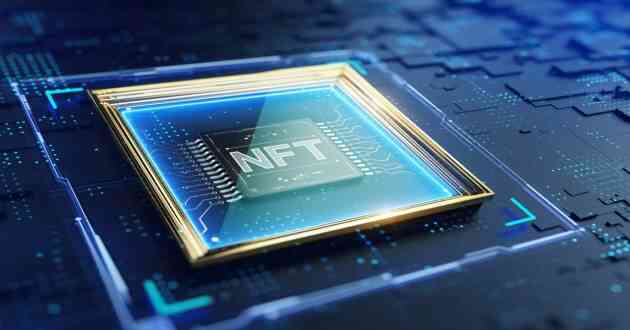Five Major Healthcare Innovation Trends To Watch Out For In 2022

With new outbreaks and supply chain setbacks continuing to disrupt our lives and economies, maintaining the momentum.
“In the midst of every crisis, lies a great opportunity.” While many may have read this Albert Einstein quote in passing, healthcare companies have had to apply this in their operations, ever since the pandemic wreaked havoc upon the industry. As a result, the healthcare sector has advanced more than ever before, in the past two years, by successfully transitioning from just preserving core operations to generating quick innovations that have saved billions of lives and reduced strain on clinicians.
However, with new outbreaks and supply chain setbacks continuing to disrupt our lives and economies, maintaining the momentum of innovation will be key to maintaining an effective response. In this light, let us take a look at the five major healthcare innovation trends set to drive growth in 2022, to help you plan your next move.
1. Medical missions go up up and above
Healthcare professionals (HCPs) around the world are actively working on using drones for medical missions. Drones can make vaccines and medications more accessible and convenient, even to the most remote parts of the country and disaster-prone areas, making it one of the most popular healthcare innovation trends. The use of drones will result in more rapid medication administration. In addition, because supplies can be summoned to the bedside, HCPs will be able to work more effectively.
Drones are about to change the face of healthcare delivery in the near future, with various countries starting to use drones in effectively delivering biologicals like serums, blood, viral culture, vaccines, and organs safely and securely, which is helping save millions of lives.
Zipline, a medical product delivery company in the US, for instance, has already used drones to transport COVID-19 vaccines and blood for transfusions in Ghana and Rwanda. Meanwhile, Abu Dhabi’s Department of Health (DoH) is currently developing a medical drone network that will operate across an entire city – a first of its kind.
2. Cancer detection and diagnosis in a flash
HCPs have recently expanded their application of AI skills, to use the technology for improving and speeding up cancer screening and treatment. For instance, Tulane University researchers, through a pilot project, have discovered that AI can detect and diagnose colorectal cancer as well as or better than pathologists, by analyzing tissue scans.
Over 13,000 images of colorectal cancer were collected by the researchers from 8,803 patients and 13 separate cancer facilities in China, Germany, and the US. The researchers then created a machine learning software using images chosen at random by technicians. Their program can now distinguish photos of colorectal cancer, which is one of the leading causes of cancer-related deaths in Europe and the US, with more accuracy than that of a pathologist.
AI can not only detect cancer early, but it can also enhance detection accuracy. To assist clinicians in diagnosing, researchers at New York University developed an AI software that was taught to spot patterns in thousands of breast ultrasound pictures. AI can also enhance the treatment journey for HCPs and patients, by augmenting existing technology.
According to a recent study, medical professionals can utilize AI to rapidly and accurately select through breast MRIs in patients with dense breast tissue to eliminate individuals who do not have cancer. This can drastically reduce radiologists’ burden while improving patient outcomes.
3. Two problems: One blockchain solution
Blockchain technology is being leveraged in healthcare to mitigate two major challenges in the industry: supply chain visibility, and data security. Electronic healthcare records (EHRs) are highly lucrative to hackers looking for extensive personal identifying information, making this system vulnerable to ransomware attacks and data breaches.
Blockchain can secure the backend infrastructure of EHRs developing common security protocols, offering end-to-end encryption, prohibiting unauthorized access to data in transit, and confirming the integrity of software downloads. Additionally, decentralizing sensitive data via this technology makes it more difficult, if not impossible, for hackers to breach data storage systems.
For example, Medicalchain, a UK-based medical technology manufacturer, is collaborating with HCPs to implement blockchain-enabled EHRs. Their system provides HCPs with a comprehensive single source of truth for a patient’s medical information, as well as allowing patients to see when their medical records are updated and to give explicit consent when they are shared with HCPs or other clinicians.
Meanwhile, another big challenge for the healthcare industry is confirming the origin of medical supplies to guarantee their legitimacy. Companies such as MediLedger, are using a blockchain-based system to track products from the point of manufacture and at each level of the supply chain, providing HCPs with complete visibility and transparency of the goods they are purchasing. This is a top priority for the industry, particularly in emerging economies where counterfeit prescription drugs kill tens of thousands of people each year.
4. Wear your heart (rate) on your sleeve
With the spread of the COVID-19 pandemic, smartwatches that measure blood oxygen saturation (SpO2) have become more commonly available, alerting people with low SpO2—a potentially fatal indication that is difficult to identify on one’s own. This is set to continue as a healthcare innovation trend, with more than 10% of smartwatch owners in the United States are now using wearables to detect COVID-19 symptoms.
Sensor and AI advancements, on the other hand, are also assisting millions in detecting and managing chronic health disorders, as well as avoiding major sickness, on wearable devices small enough to be worn on a wrist or as a penny-sized patch. According to Deloitte Global, 320 million consumer health and wellness wearable devices would be shipped globally in 2022. By 2024, that amount is expected to rise to roughly 440 million units as new products enter the market and more HCPs get acquainted with them.
These figures include both smartwatches, which are marketed to and purchased by consumers, and medical-grade wearables which are often prescribed by doctors. These wearables, with increasingly powerful biosensing capabilities, are becoming more common in hospitals, assisting HCPs in monitoring not only their patients’ heart rate and activity levels, but also their hydration, electrolytes, electrocardiogram (ECG), blood pressure, muscle load, human strength, and exhaustion levels.
For instance, the Apple Watch Series 4 has, apart from all the basic features, an FDA-cleared ECG app that gives more detailed and flawless heart reading. The device is the first of its kind to use exact 30-second heart rate data to detect heart arrhythmia. It also employs smart sensors to provide users with high and low heart-rate detection, as well as fall detection. Fall detection is combined with an SOS trigger, which alerts your loved ones in the event of a serious fall.
5. Transforming therapies at the nano level
The application of nanotechnology in healthcare is breaking new ground, with its ability to modify matter at the atomic level. This healthcare innovation trend has the potential to transform many aspects of medical treatment, including diagnostics, disease monitoring, surgical equipment, regenerative medicine, vaccine development, and medication delivery.
For example, Nanowear, an AI-powered remote diagnostics platform based on FDA-approved cloth nanotechnology, can capture and transmit 85+ dimensions of clinical-grade biomarker data from simple skin contact. The first-of-its-kind platform from Nanowear offers a major leap forward in telemedicine by providing clinicians with quantifiable decision-making tools, thereby increasing outcomes without the need for physical visits.
SimpleSENSE, Nanowear’s flagship product, that has also received FDA 510(k) clearance, captures and transmits medical-grade lung function, lung volume/capacity, heart function and cardiac rhythm, blood pressure, and blood flow, effectively replacing the stethoscope, blood pressure cuff, ECG, and respiration machines. This all-in-one gadget is also a digital platform with A.I.-based scoring that delivers deep, accurate, continuous, time-synchronized, and simultaneous assessment of the heart, lungs, and upper vascular system by analyzing 120 million+ data points per patient every day.
Meanwhile, in Brisbane, nanotechnology is assisting in the creation of needle-free vaccines, with the technique being hailed as a game-changer for vaccine accessibility, potentially saving tens of thousands of lives each year. Vaxxas, a vaccine development company, is developing a vaccine patch that can be applied to the skin and removed within 10 seconds. The patch will be able to be delivered without the need for refrigeration, and with simple administration, developing countries may well be able to receive and give life-saving vaccinations.
Looking ahead
Innovation is a crucial part of any industry’s recovery, as demonstrated by previous downturns, and thus it will be essential for healthcare players to remain competitive in the industry. To succeed, leaders must prioritize four of the eight essentials of innovation—choose, adapt, accelerate, and extend—while also ensuring that end-to-end foundations are in place.
Is your firm ready to face the challenges caused by ongoing industry upheavals? Netscribes provides comprehensive market and innovation insights to enable both healthcare providers and tech firms to keep track of industry trends, and better respond to consumer needs through successful products. To know more, contact us today.


